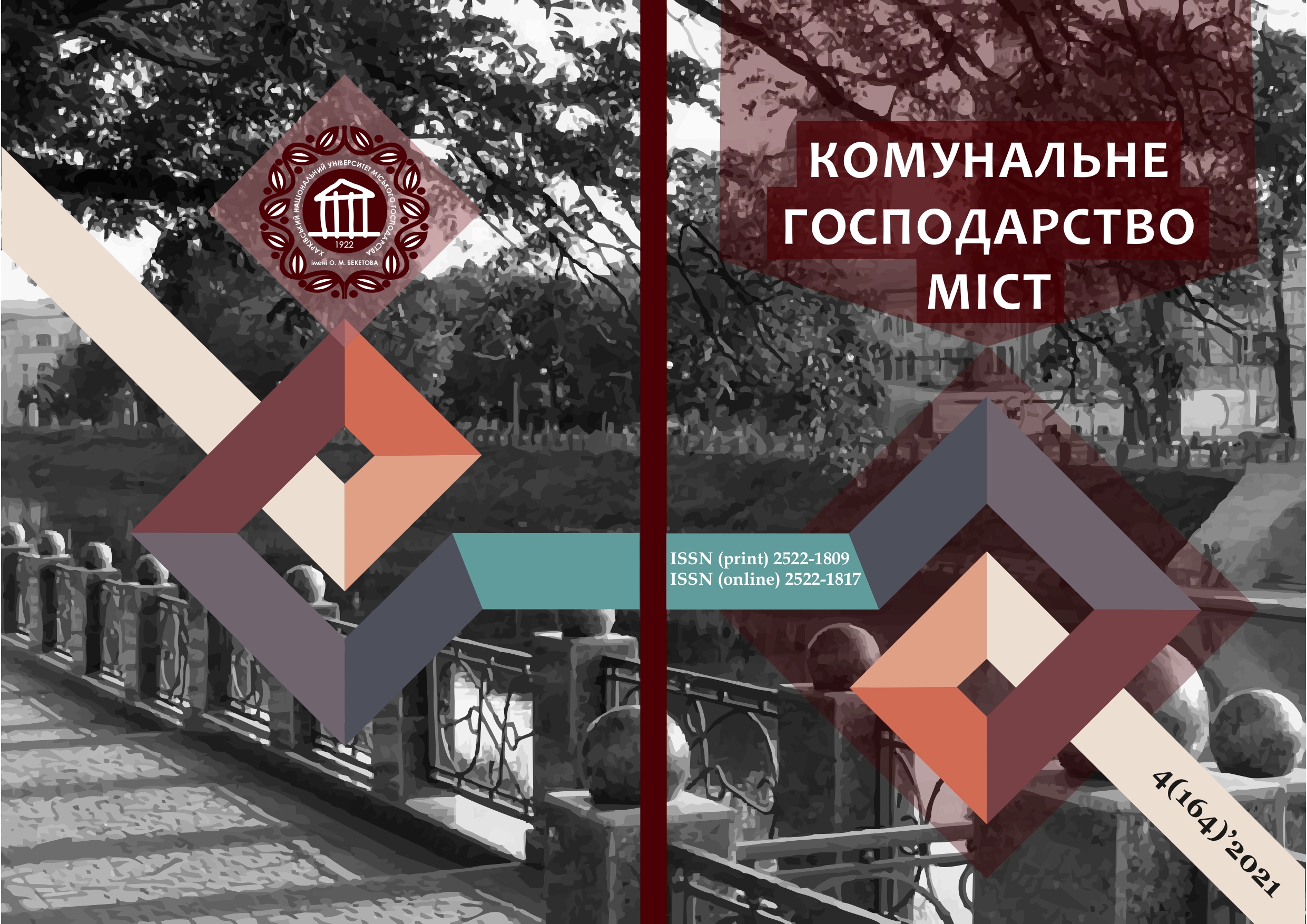PRINCIPLES OF PROTECTION AND USE OF CULTURAL HERITAGE SITES IN TERMS OF ECOLOGICAL OPTIMIZATION OF RESIDENTIAL AREAS
Array
Keywords:
cultural heritage, ecological optimization, settlement territory, object, protection.Abstract
The article investigates the principles of protection and use of cultural heritage sites in terms of ecological optimization of residential areas. The concept of cultural heritage object is defined and the order of definition of protection zones of cultural heritage objects in the conditions of ecological optimization of settlement territories is established. The principles of formation of the status of a cultural heritage object are revealed and the legislative basis is described. The concept of "territory of cultural purpose" is separated. Describes the problems of protection of cultural heritage sites, the main of which include the complexity of the content of objects, the search for the necessary funds for restoration, to solve which it is necessary to attract external sources of funding other than the state. The generally accepted ways of solving the outlined problems are given and the principles of their realization are substantiated, namely the necessity of complex application is emphasized. The classification of the process of reconstruction of cultural heritage is presented, the main directions of which include: restoration, regeneration, revitalization, revaluation, improvement and new construction. Each of these classes is described according to the method of implementation on site. It is emphasized that the protection zones of cultural heritage sites are areas adjacent to the included in the register of monuments and ensembles, and within which, in order to ensure the preservation of cultural heritage sites and compositional and species links, the construction of capital construction projects and their reconstruction related to changes in height, number of floors, area, except for construction and reconstruction of linear objects. The boundaries of the protection zone of the cultural heritage object are structured according to the zones of location of the latter. The directions of the relation of the state supervision in the field of protection of objects of cultural heritage to the principles of realization of the state support are defined. The list of possible measures of influence of citizens and legal entities in the field of protection of cultural heritage objects in the conditions of ecological optimization of settlement territories is offered.
References
2. Ganets, S.V. (2017). Factors of formation of a new functional purpose of post-industrial territories. Modern problems of architecture and urban planning, 49, 293–299.
3. Topal, S.S. (2018). Principles and methods of improving the residential areas of the city of Odessa in order to humanize and ensure sustainable development. Urban Planning and Spatial Planning, 68, 562–567.
4. Novakovskaya, I.O. (2018). Economics of land use. Kyiv: Agrarian Science
5. Yigitcanlar, T. & Dizdaroglu, D. (2015). Ecological approaches in planning for sustainable cities: A review of the literature. Global journal of environmental science and management, 1 (2), 159–188. DOI: https://dx.doi.org/10.7508/gjesm.2015.02.008
6. Saghin, I., Ioja, C., Gavrilidis, A., Cercleux, L., Niță, M. & Vânău, G. (2012). Perception of the Industrial Areas Conversion in Romanian Cities-Indicator of Human Settlements Sustainability. In 48th ISOCARP Congress, 2–3.
7. Berens, C. (2010). Redeveloping industrial sites: a guide for architects, planners, and developers. John Wiley & Sons.
8. Petryshyn, H. (2016). Kształtowanie terenów nadwodnych Kopenhagi w kontekście rozwoju metropolitalnego. Przestrzeń i Forma, 25, 223–240. DOI: https://doi.org/10.21005/pif.2016.25.C-04
9. Brown, L.J. & Dixon, D. (2014). Urban design for an urban century: Shaping more livable, equitable, and resilient cities. John Wiley & Sons.
10. Ouředníček, M., Šimon, M., & Kopečná, M. (2015). The reurbanisation concept and its utility for contemporary research on post-socialist cities: The case of the Czech Republic. Moravian Geographical Reports, 23 (4), 26–35. DOI: http://dx.doi.org/10.1515/mgr-2015-0022
11. Baborska-Narożny, M. (2012). Rewitalizacja terenów poprzemysłowych-modele przekształceń na wybranych przykładach. Czasopismo techniczne. Architektura, 109 (3-A), 275–279.
12. Muszyńska-Jeleszyńska, D. & Jasińska, M. (2013). Rewitalizacja terenów poprzemysłowych w Europie Środkowej–doświadczenia projektu COBRAMAN. Problemy Rozwoju Miast, 10 (3), 95–104.
13. Coolen, H. (2008). The meaning of dwelling features: Conceptual and methodological issues, Vol. 24. Amsterdam, Delft University Press.
Downloads
Published
How to Cite
Issue
Section
License
The authors who publish in this collection agree with the following terms:
• The authors reserve the right to authorship of their work and give the magazine the right to first publish this work under the terms of license CC BY-NC-ND 4.0 (with the Designation of Authorship - Non-Commercial - Without Derivatives 4.0 International), which allows others to freely distribute the published work with a mandatory reference to the authors of the original work and the first publication of the work in this magazine.
• Authors have the right to make independent extra-exclusive work agreements in the form in which they were published by this magazine (for example, posting work in an electronic repository of an institution or publishing as part of a monograph), provided that the link to the first publication of the work in this journal is maintained. .
• Journal policy allows and encourages the publication of manuscripts on the Internet (for example, in institutions' repositories or on personal websites), both before the publication of this manuscript and during its editorial work, as it contributes to the emergence of productive scientific discussion and positively affects the efficiency and dynamics of the citation of the published work (see The Effect of Open Access).

